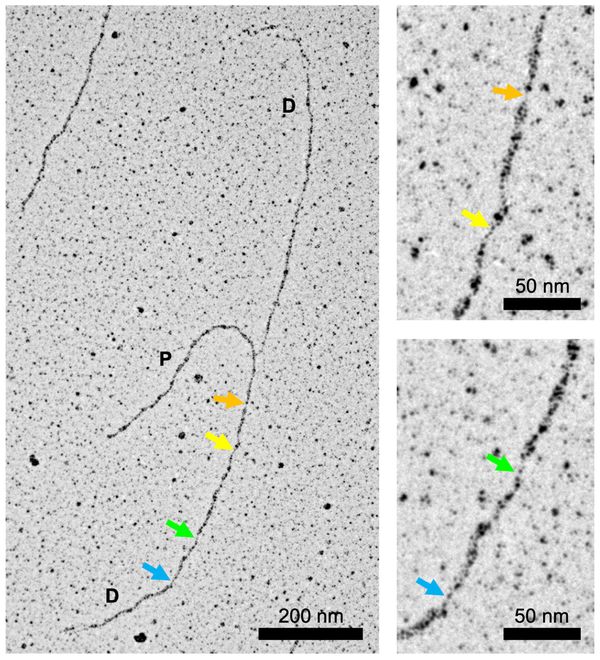
Understanding the effect of anti-cancer drugsmight improve cancer treatment
20. 04. 2022
An international team of scientists led by Hana Hanzlíková from the Institute of Molecular Genetics of the Czech Academy of Sciences (CAS) and Keith Caldecott from the University of Sussex in the UK has discovered which sites in the DNA molecule inside cancer cells are the basis of the effect of anticancer drugs (called PARP inhibitors). The results, published recently in the prestigious Nature Structural and Molecular Biology journal, will be used to understand the mechanism of the effect of PARP inhibitors that lead to the death of certain types of cancer cells and open the path to new ways of treating tumors.
Our body is made up of cells that need the information stored in the cell nucleus in the DNA molecule to function properly. DNA, or deoxyribonucleic acid, carries genetic information and determines proper cell division and the survival of the whole organism. Its exact copying, or replication, as well as the preservation of its integrity, must therefore be strictly controlled and quickly corrected in case of irregularities.
DNA is a double-stranded molecule, and when it is copied, two double helices are created, each with one strand from the original molecule and one complementary, newly created strand. One strand is copied simply in a straight line and a new identical whole DNA double helix is created. The other strand, however, is copied in the opposite direction in short sections, called Okazaki fragments, of which 30-50 million are produced during the copying of human DNA, i.e. during one cell division. The precise splicing of millions of DNA fragments is therefore essential for maintaining the integrity of the daughter DNA strand and the proper functioning of the cell.
Tens of thousands of fragments need to be repaired
In the past, the international team of scientists led by Hana Hanzlíková from the Institute of Molecular Genetics of the CAS and Keith Caldecott from the University of Sussex in the UK has already made the surprising discovery that although the process of connecting DNA fragments during copying is highly efficient, it is not 100% efficient. Scientists have discovered that up to tens of thousands of unlinked Okazaki fragments need to be repaired during natural cell division. The repair sites are recognised by the PARP family enzymes. These are well known to play an important role in another vital process, the repair of DNA strand breaks caused, for example, by ionising radiation. For a long time, the PARP protein has been the molecular target of a whole group of substances called PARP inhibitors, which are clinically used for the treatment of breast, ovarian, and prostate cancers. However, the nature and origin of the DNA structures on which PARP enzymes are "trapped" by these inhibitors remain unclear.
"New findings from our Czech-British research team are now showing that PARP inhibitors prevent short stretches of DNA from linking together during DNA copying in the cell and that intermediate products of unlinked Okazaki fragments are probably the main source of cytotoxicity in rapidly dividing cancer cells. The results may contribute to a better understanding of the role of PARP inhibitors in cancer treatment and help develop more effective drugs of this type," explains the team leader Hana Hanzlíková.

The image shows a section of a dividing DNA molecule isolated from cancer cells under an electron microscope. The parental double helix (P) gives rise to two daughter double-stranded DNA molecules (D). Arrows point to thinner single-stranded unlinked Okazaki fragments on the chain, which is copied in sections.
Read also
- A unique method of rare-earth recycling can strengthen the material independence
- High-energy cosmic rays dominated by heavy METALS
- Genome Tool Developed at CAS Featured in PLoS Genetics
- Why do brain cancer cells steal mitochondria?
- Secrets of the Nano- World: a new comic book about nanotechnology
- Teen duo from Slovakia and Czechia named Global Winner for clean water solution
- Professor Pavel Hozák Receives the Paul Nakane Prize
- Neutrino is lighter than previously thought
- The Earth Prize 2025 goes to Czechia and Slovakia for pioneering water purifier
- Scientists discover compound that “should not exist”
Contacts for Media
Markéta Růžičková
Public Relations Manager
+420 777 970 812
Eliška Zvolánková
+420 739 535 007
Martina Spěváčková
+420 733 697 112